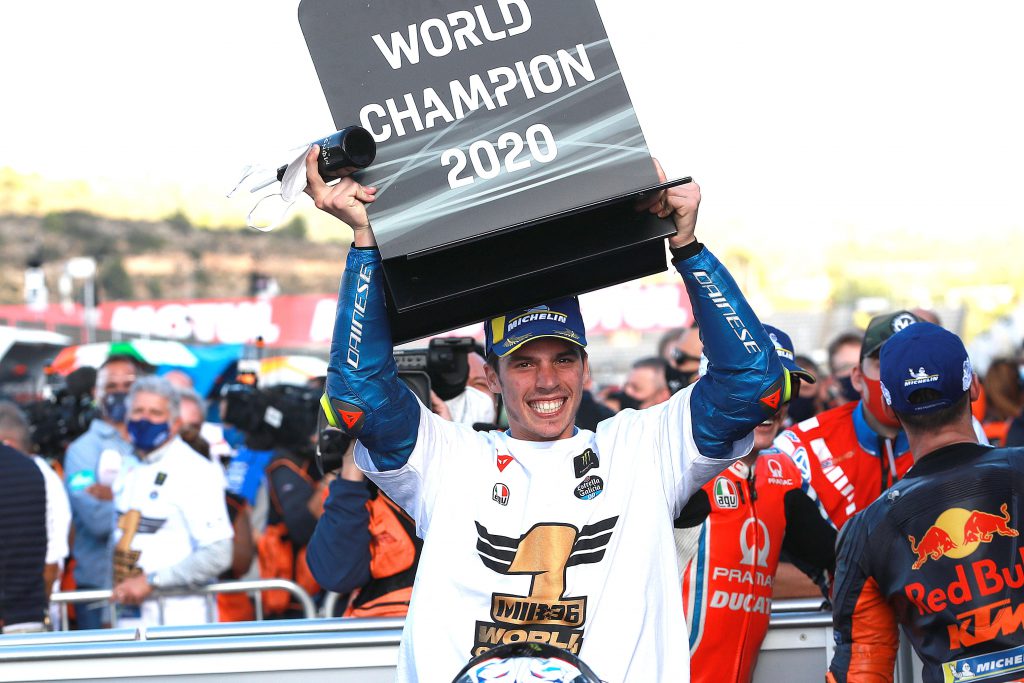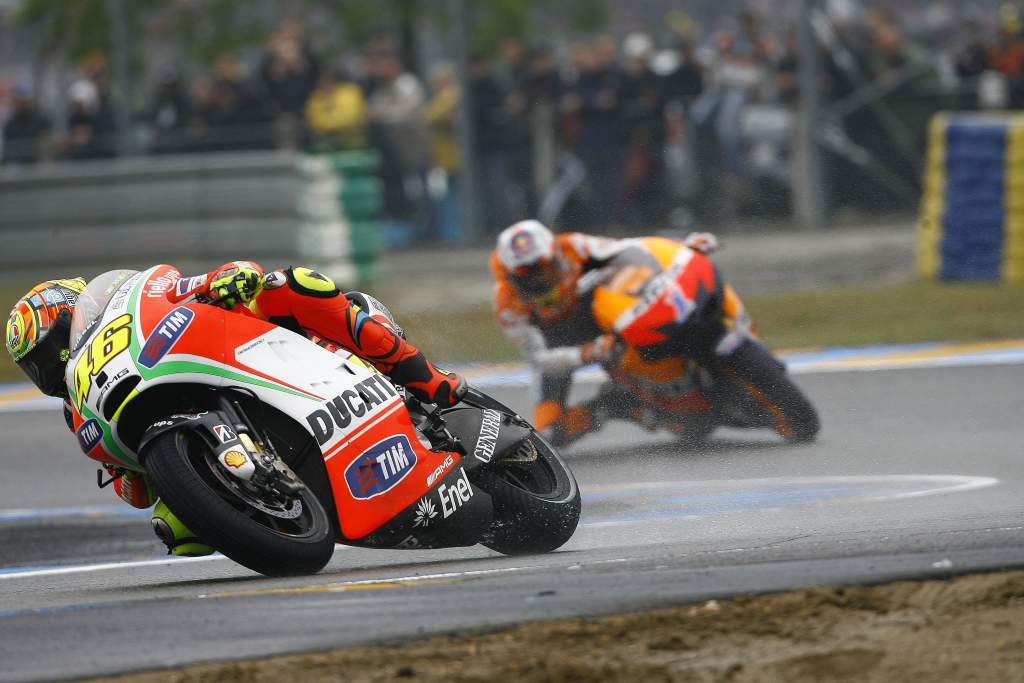MotoGP’s 2021 world champion Fabio Quartararo has confirmed that he will retain his traditional number 20 plate for the 2022 season, following a modern if somewhat unpopular tradition of eschewing the chance to carry the honour of the badge.
“We will not see this number,” the Frenchman confirmed, “because I started with the number 20 and I feel like I’m not number one. I will keep going with the 20 until the end of my career because it’s the number that I started with when I was four years old.”
As his predecessor champion Joan Mir had made the same decision, it means the wait to see the #1 number plate grows longer. And to recall how we’ve arrived at this paradigm, today we are reposting the feature that ran earlier this year, when Mir was still publicly mulling whether to pick #1 or #36.
With 2020 MotoGP world champion Joan Mir set to announce on February 12 what number he will run during the 2021 season, it has once again restarted the conversation about the iconic number one plate and its previous uses in the premier class.
As branding has taken precedence over history, it’s actually become something of a rarity to see the number one plate used, with only a handful of champions electing to run it in the era of modern four-stroke MotoGP racing.
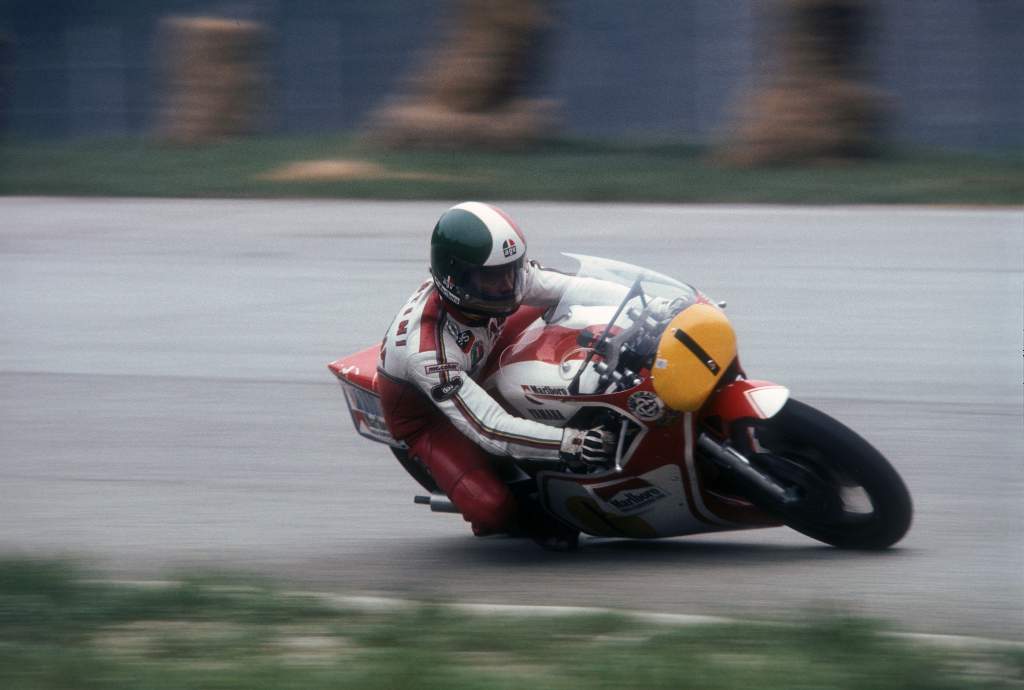
Prior to the modern era, it was almost a rule that a champion would sport the iconic number next year. In fact, for the first 50 years of grand prix motorcycle racing the only exception to this unwritten rule was the man who became the forebearer to the modern era of racing in many regards – Barry Sheene.
The last British champion in the premier class, Sheene was a maverick figure of his time thanks not to his on-track success but his off-track actions. One of the few two-wheeled stars able to break through into the British public consciousness, he was the first rider to adopt many of the exercises in branding that have now become de rigueur.
Happy to court the media (who can forget his famous hospital bed interview after smashing himself to pieces at Daytona?), easily identified by his famous duck sticker and the king of practical jokes and bold statements, Sheene was the first rider to be defined by his race number, the iconic seven that he retained even after earning the number one in 1976 and 1977.
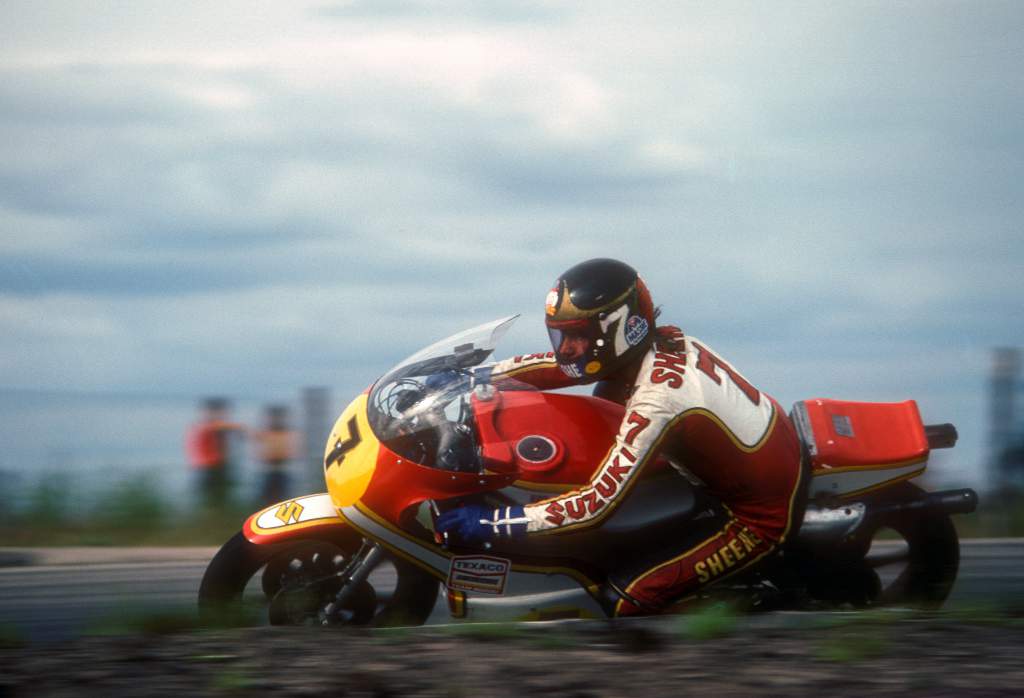
However, following Sheene, it took another quarter-century before another rider followed his lead – and given the similarities between the pair, it should come as no surprise that it was Valentino Rossi who next elected to keep his own iconic number when he won the 2001 world championship for the first time.
But while Sheene was an exception to the rule, Rossi was (as he has been in many regards) the man who changed the game, establishing a new normal as the sport expanded, as rider branding became more important – and as merchandise sales became an increasingly important revenue stream.
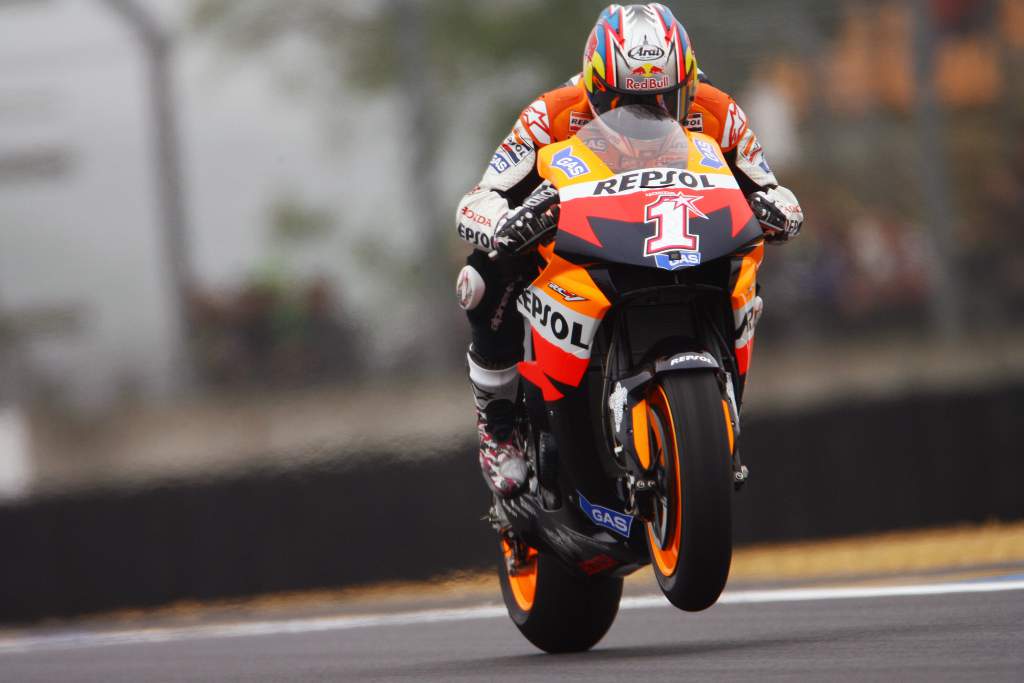
With Rossi dominating the sport for most of the noughties, the two champions either side of his five consecutive titles were both American: Kenny Roberts Jr (pictured below) in 2001, and Nicky Hayden (pictured above) in 2007, both running the number one plate.
That should perhaps come as no surprise from either, with the traditionalist US riders keen to pay homage to the past; Roberts Junior in particular by doing what his father had done before him by first taking it from Sheene in 1978.
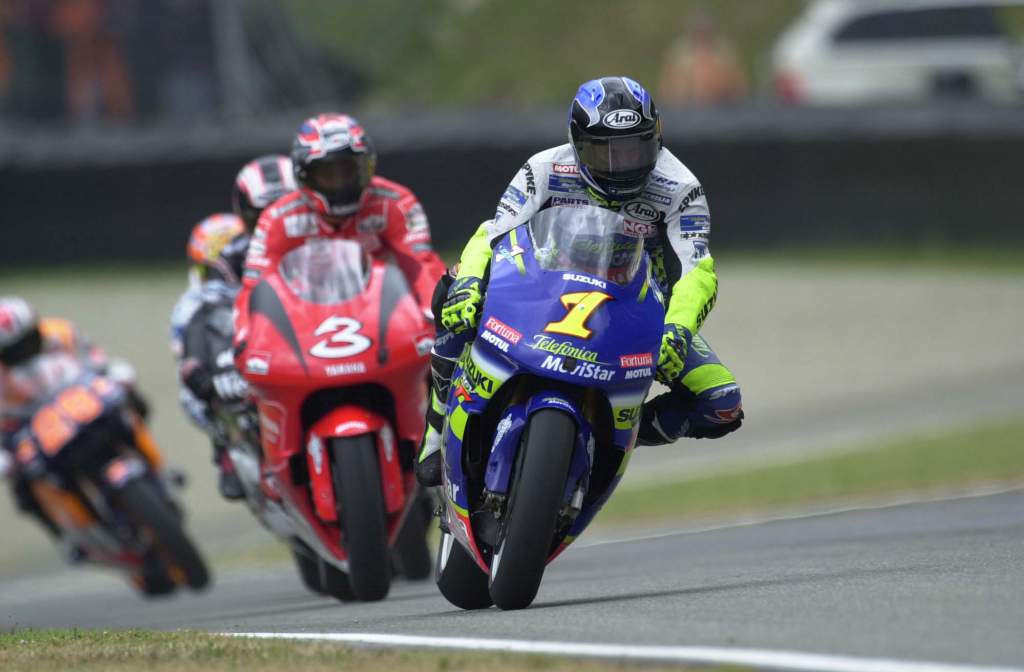
The only other champion of the noughties, Casey Stoner, ran the #1 in 2008 after his success the previous year, and Rossi’s 46 then took the two remaining titles of the decade, before Jorge Lorenzo again adopted the number-one plate.
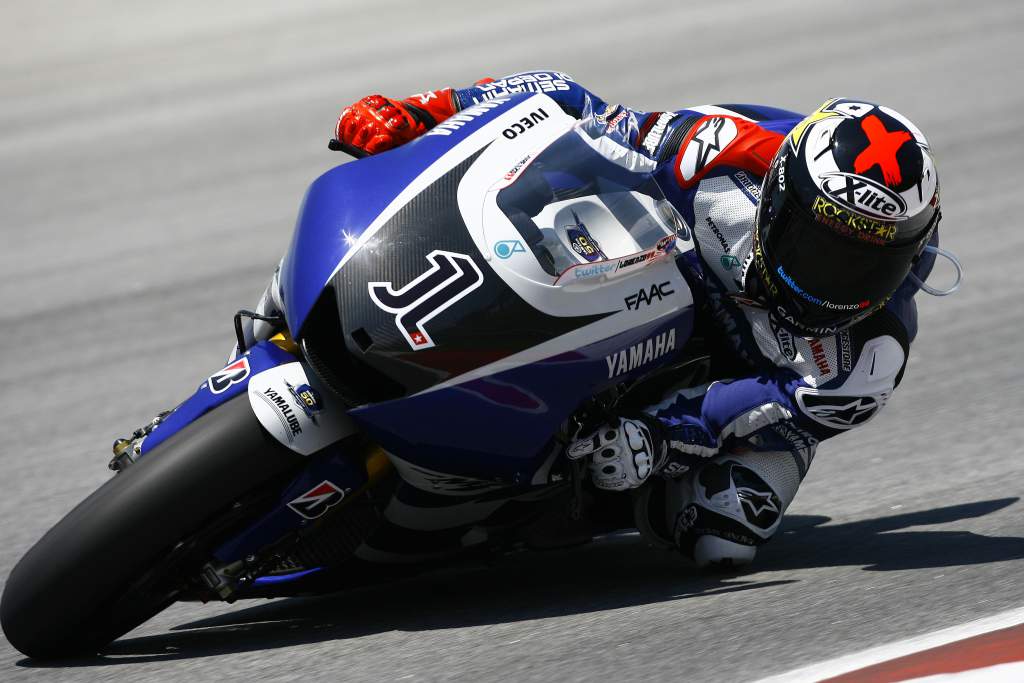
Branding won out again when Lorenzo next won, though, with Lorenzo electing to keep his 99 (a number he had only adapted for the 2009 season after switching from 48 following an ugly split with former manager Dani Amatriain) when he won two more titles in 2012 and 2015.
And perhaps adding to the desire for many riders (a superstitious bunch at the best of times) to keep their own number, Lorenzo wasn’t able to retain it in 2011 anyway.
In fact, the last rider to actually keep hold of the plate after sporting it was Mick Doohan when he won it in 1994 and held onto it until 1999.
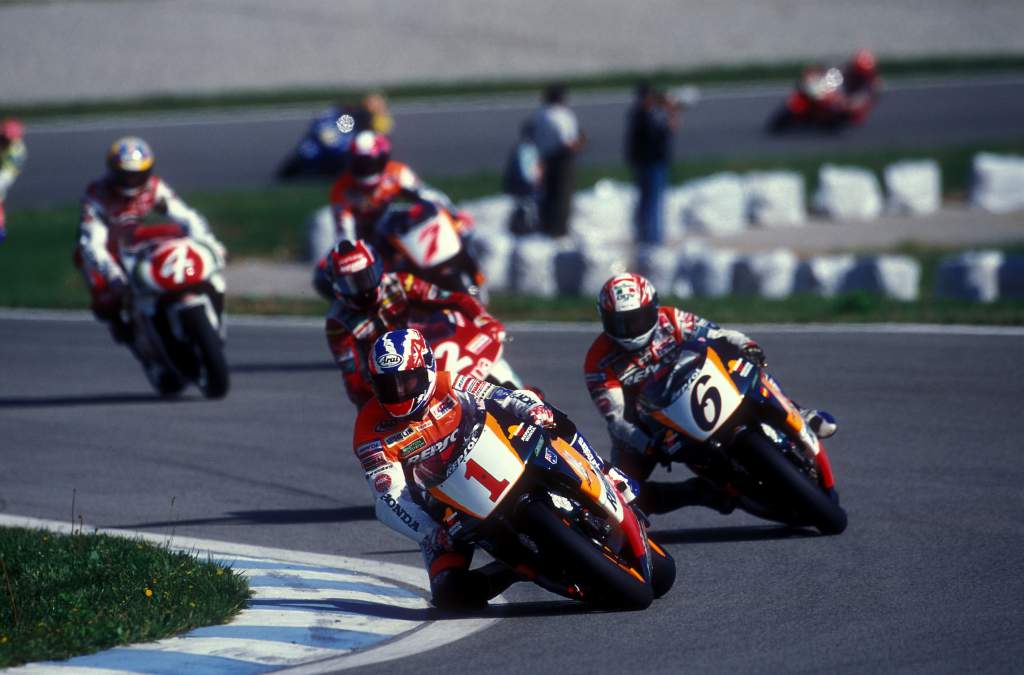
In 2012, it was the turn of Stoner to inherit the plate (and maybe the curse) from Lorenzo, taking his second title and first for Honda the year previously.
Since then the championship has been largely dominated by the first rider since Rossi to be as closely tied to a brand identity: Marc Marquez.
The Repsol Honda rider took all but one championship since his rookie season, until injury forced him out of the 2020 season and left Mir a clear path to the crown and the right to carry, if he chooses, the plate next year.
